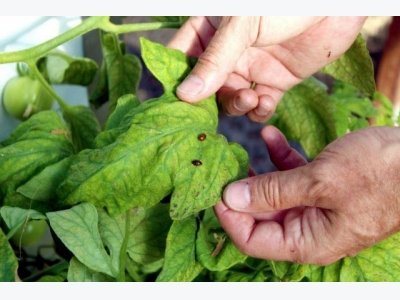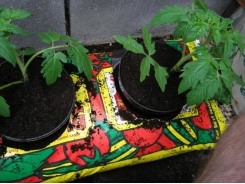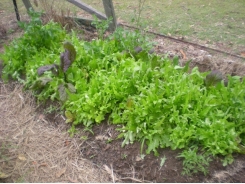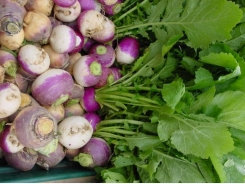The benefits and history of aquaponics

Aquaponics is a combination of raising fish (aquaculture) and the soil-less growing of plants (hydroponics) that grows fish and plants together in one integrated system.
“The fish waste provides an organic food source for the plants, and the plants naturally filter the water for the fish,” reads The Aquaponic Source website. “The third participants are microbes (nitrifying bacteria). These bacteria convert ammonia from the fish waste first into nitrites, and then into nitrates. Nitrates are the form of nitrogen that plants can uptake and use to grow.”
Issues with soil-based gardening — pesticides and artificial nutrient usages, weeds, pests, water requirement, location — are solved with aquaponics.
Benefits
‒ Recycling of nutrient-rich water continuously. There is no toxic run-off.
‒ No harmful petro chemicals, pesticides or herbicides are used.
‒ Gardening chores get cut down or eliminated.
‒ Flexible location. An aquaponics system can be put in a greenhouse, a basement or even your living room.
‒ Versatility. Aquaponic systems can be built for personal or commercial levels of growth.
‒ Used for the harvest of both plants and fish.
‒ Eliminates pests and weeds.
‒ It’s cost effective. Once the system is up and running there are minimal costs since fish replace the use of chemical fertilizers and nutrients.
Other environmental benefits of aquaponic systems include water, gas, energy and land conservation.
The fertilizer used is from cold-blooded fish, which do not carry E. coli or Salmonella like warm-blooded animals.
A little history
Though the term “aquaponics” was coined in the 1970s, the practice has ancient roots.
According to the article, Aquaponics: A brief history (milkwood.net), “The earliest example may be the lowland Maya, followed by the Aztecs, who raised plants on rafts on the surface of a lake in approximately 1,000 A.D.,” the article states. “The earliest example of another branch can be found in South China, Thailand and Indonesia, where the cultivation and farming of rice in paddy fields in combination with fish are cited as examples of early aquaponic systems.”
According to The Aquaponic Doctors website, in the 1970s Dr. James Rakocy constructed and evaluated an aquaponic system that produced tilapia, ornamental fish, aquatic plants and edible plants.
In 1980 Rakocy started his 30-year career at the University of Virgin Islands (UVI).
“At UVI my focus switched to garden plants such as vegetables and herbs. My research team first built a model aquaponic system out of three and one half oil barrels, a production method that has recently become popular,” Rakocy wrote. “After several production trials, we built the first commerical-scale UVI system containing six hydroponic tanks and four fish rearing tanks.”
Rakocy retired in 2010 but still teaches commercial aquaponic workshops in the U.S. twice a year with Dr. Wilson Lennard.
Related news
Tools

Phối trộn thức ăn chăn nuôi

Pha dung dịch thủy canh

Định mức cho tôm ăn

Phối trộn phân bón NPK

Xác định tỷ lệ tôm sống

Chuyển đổi đơn vị phân bón

Xác định công suất sục khí

Chuyển đổi đơn vị tôm

Tính diện tích nhà kính

Tính thể tích ao




 How to grow tomatoes in a growing bag
How to grow tomatoes in a growing bag  Expert Tips for Growing Tomatoes in Grow-Bags
Expert Tips for Growing Tomatoes in Grow-Bags